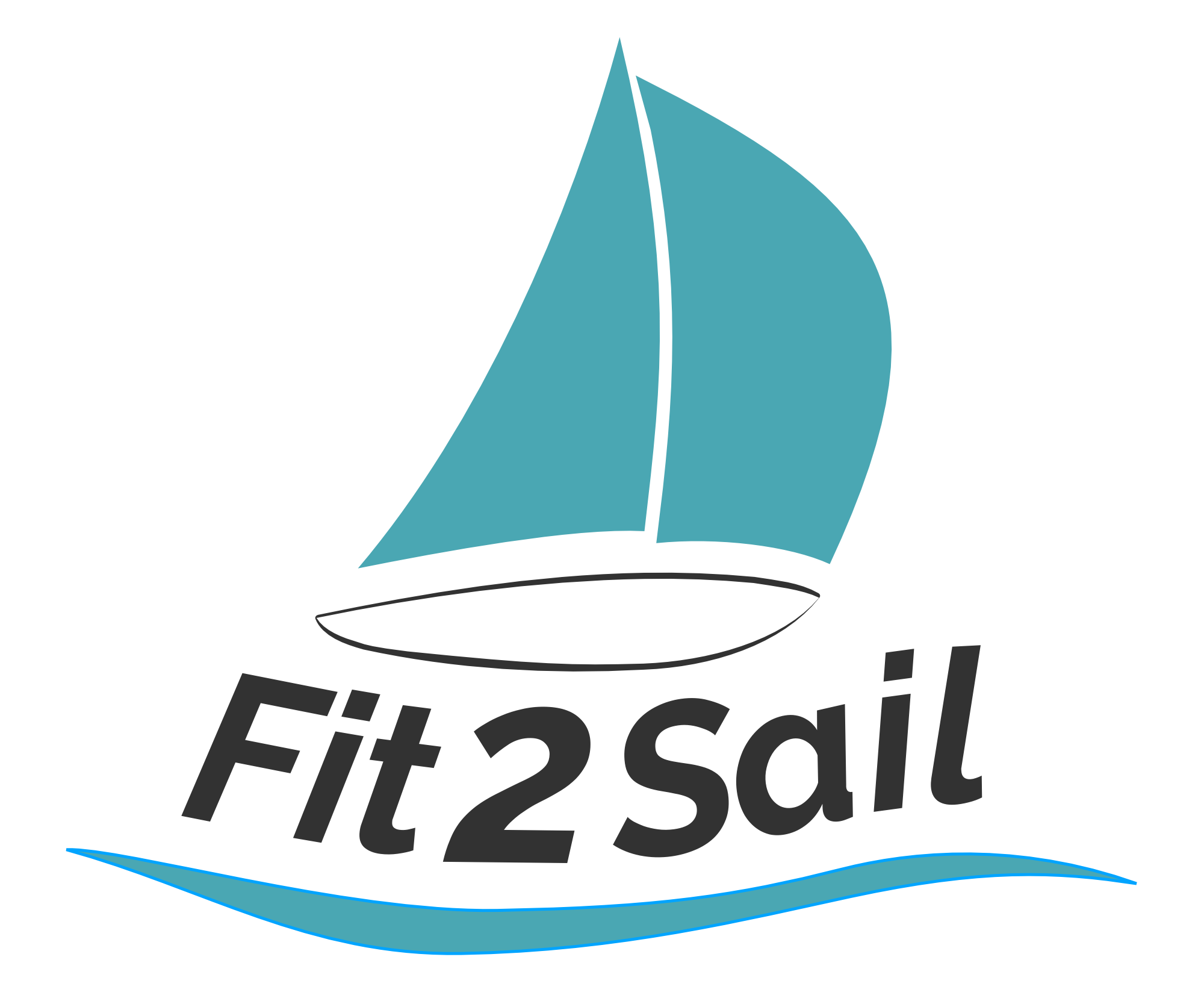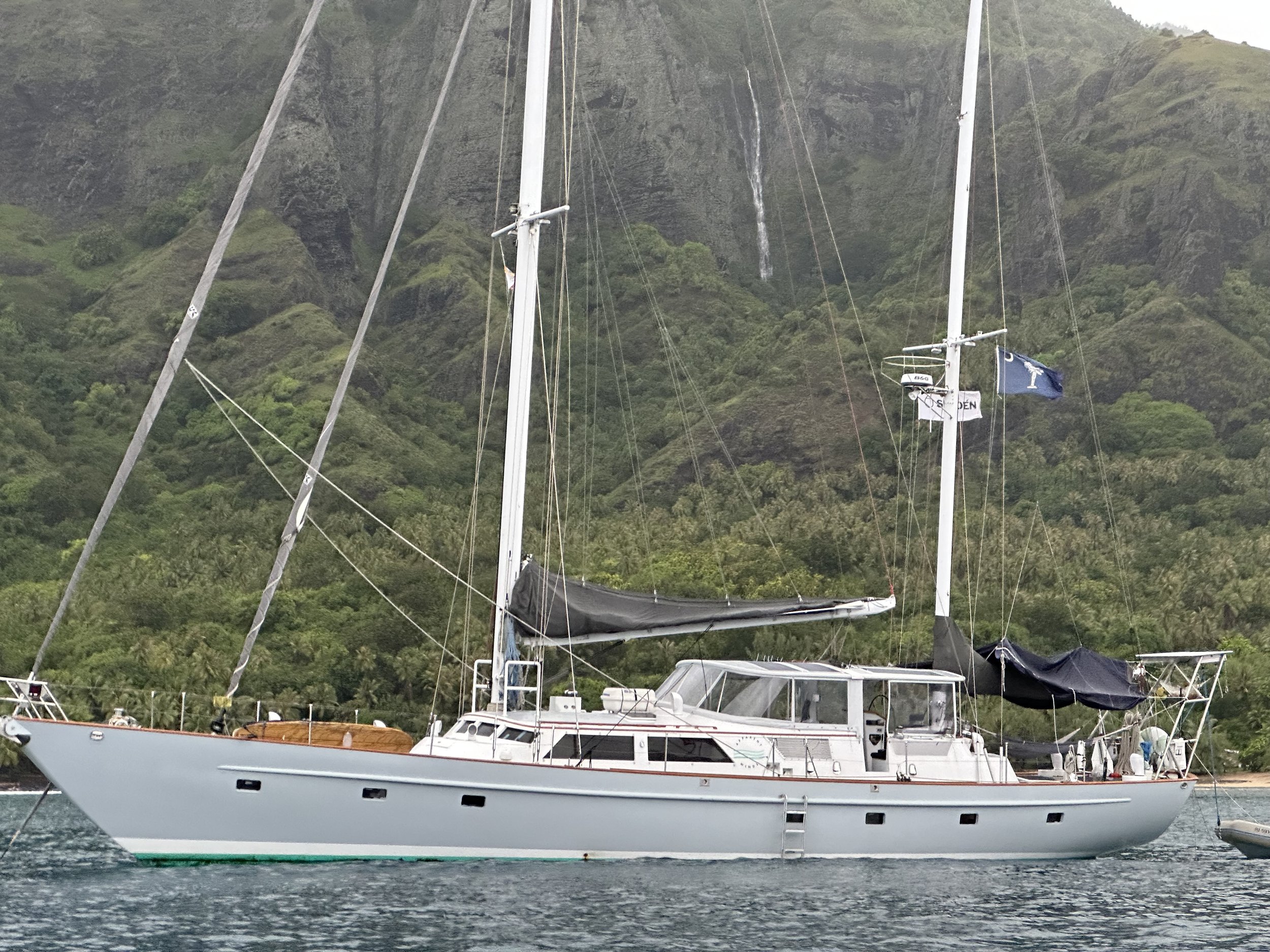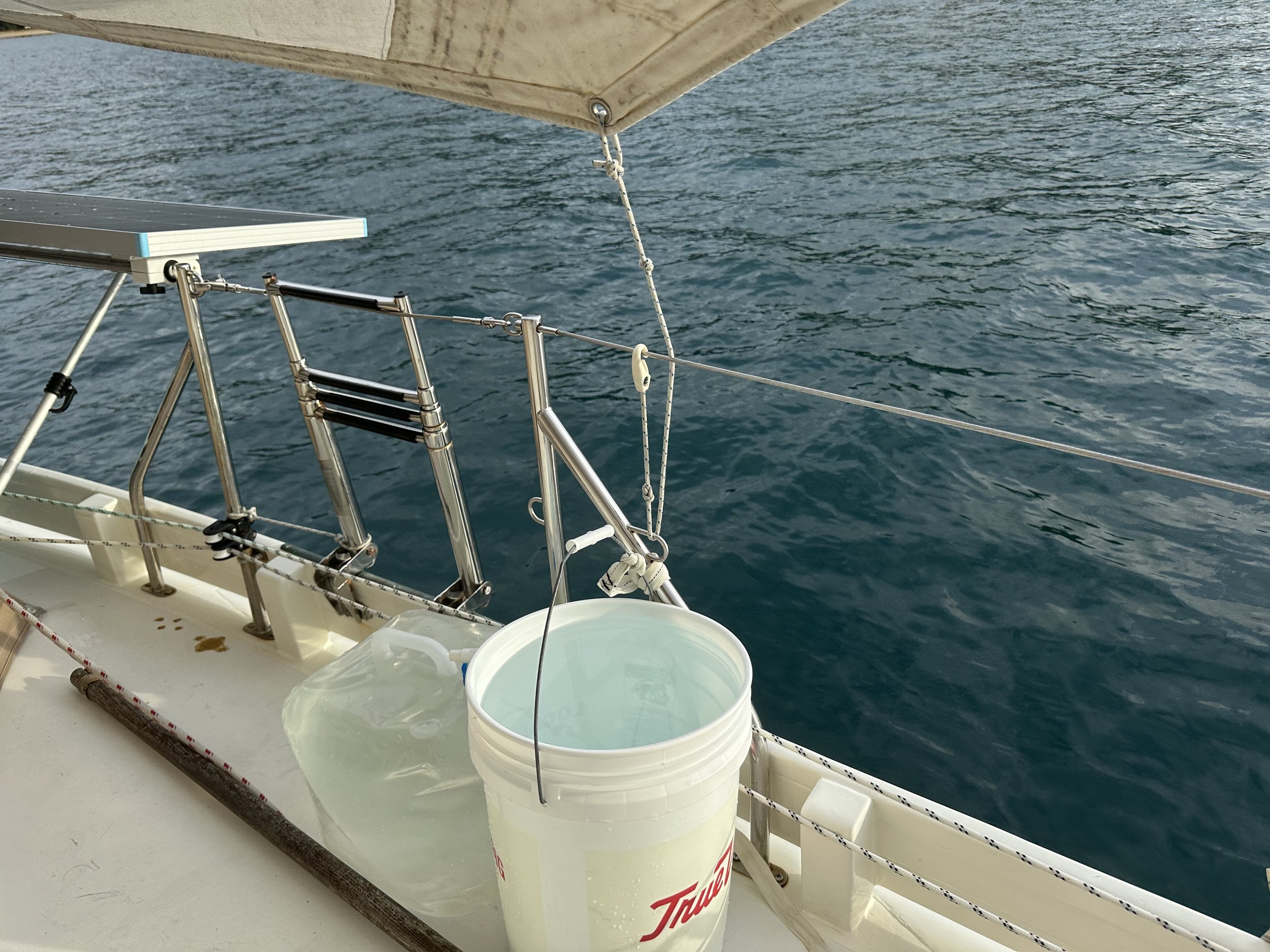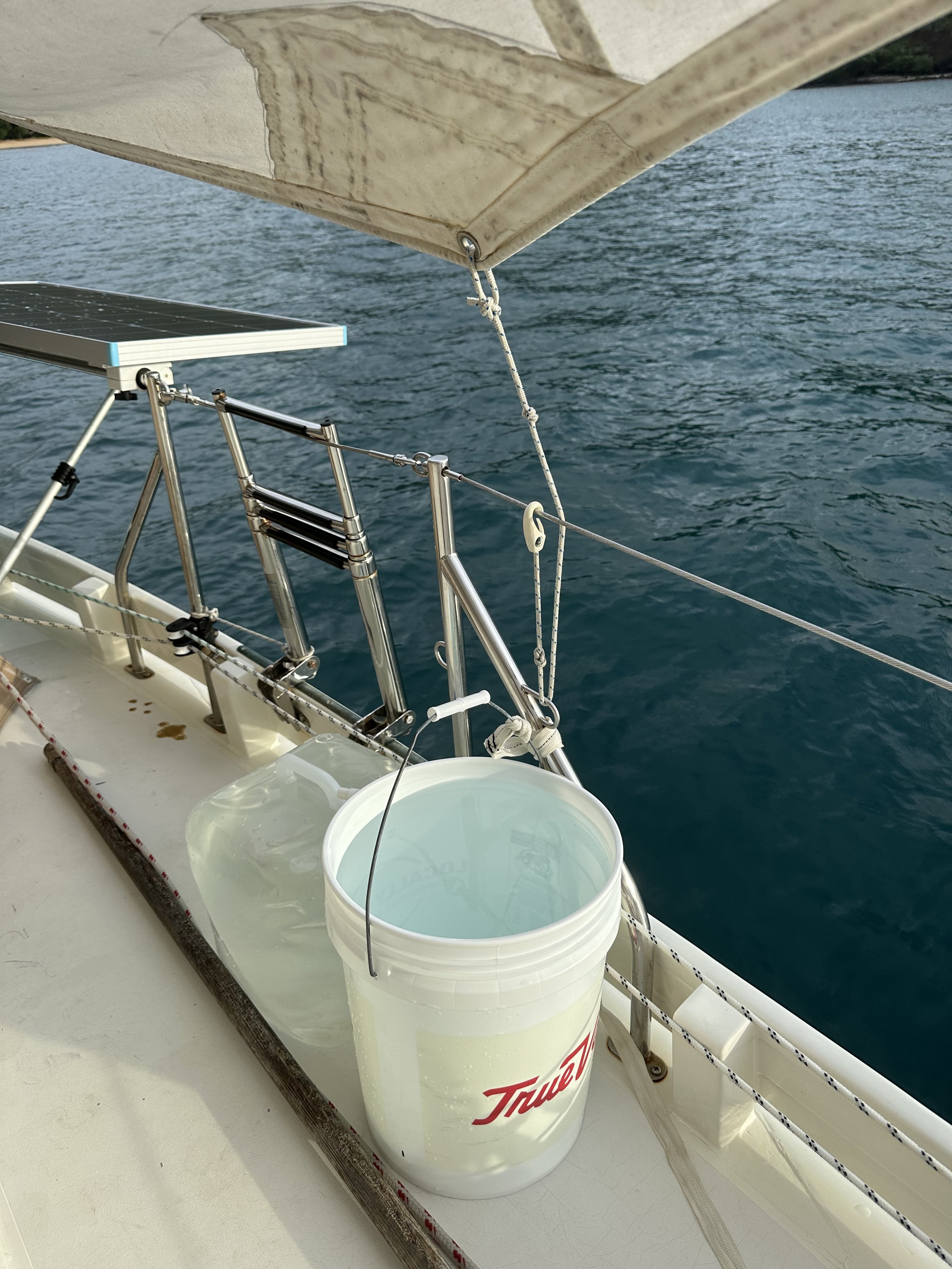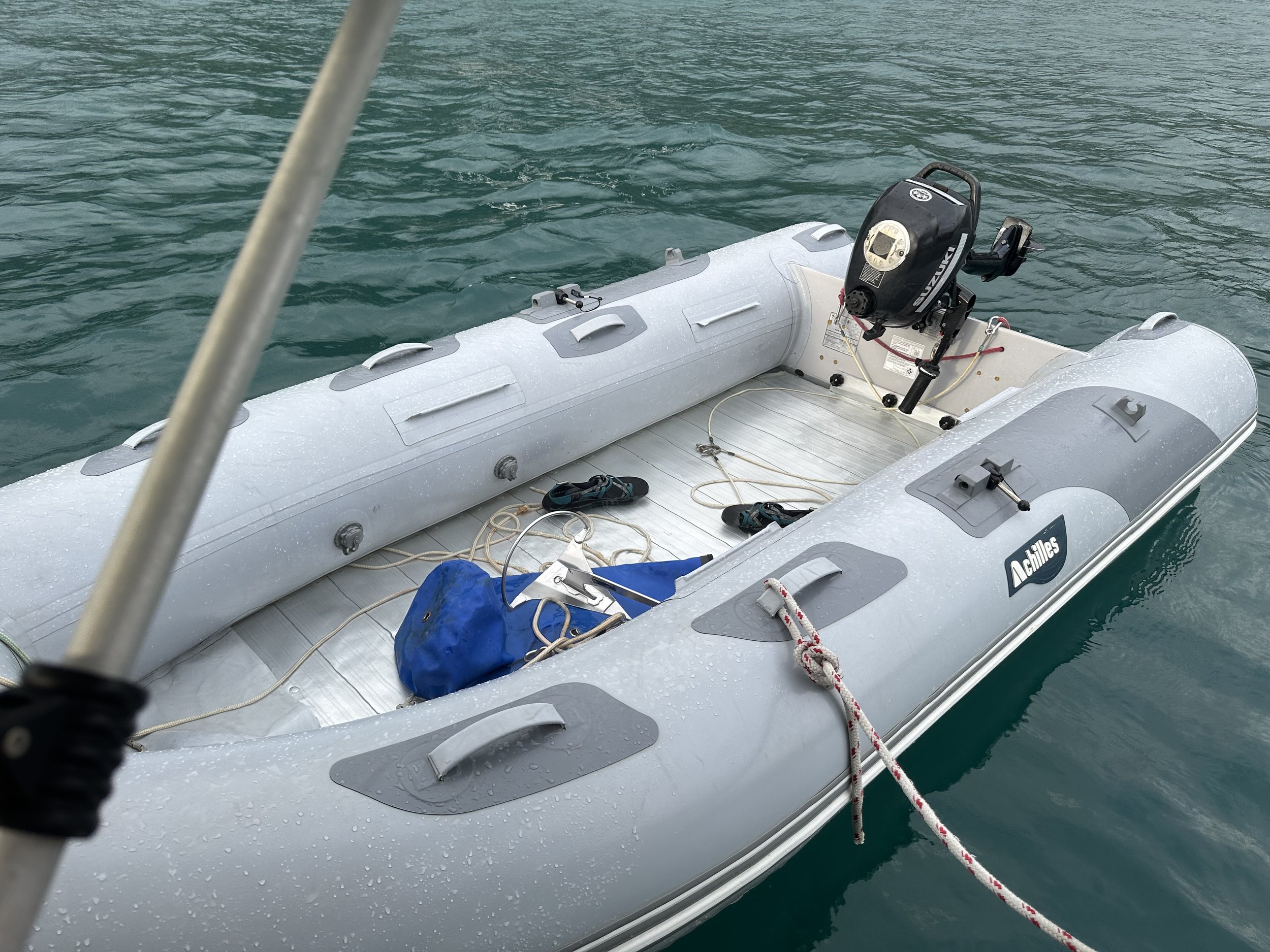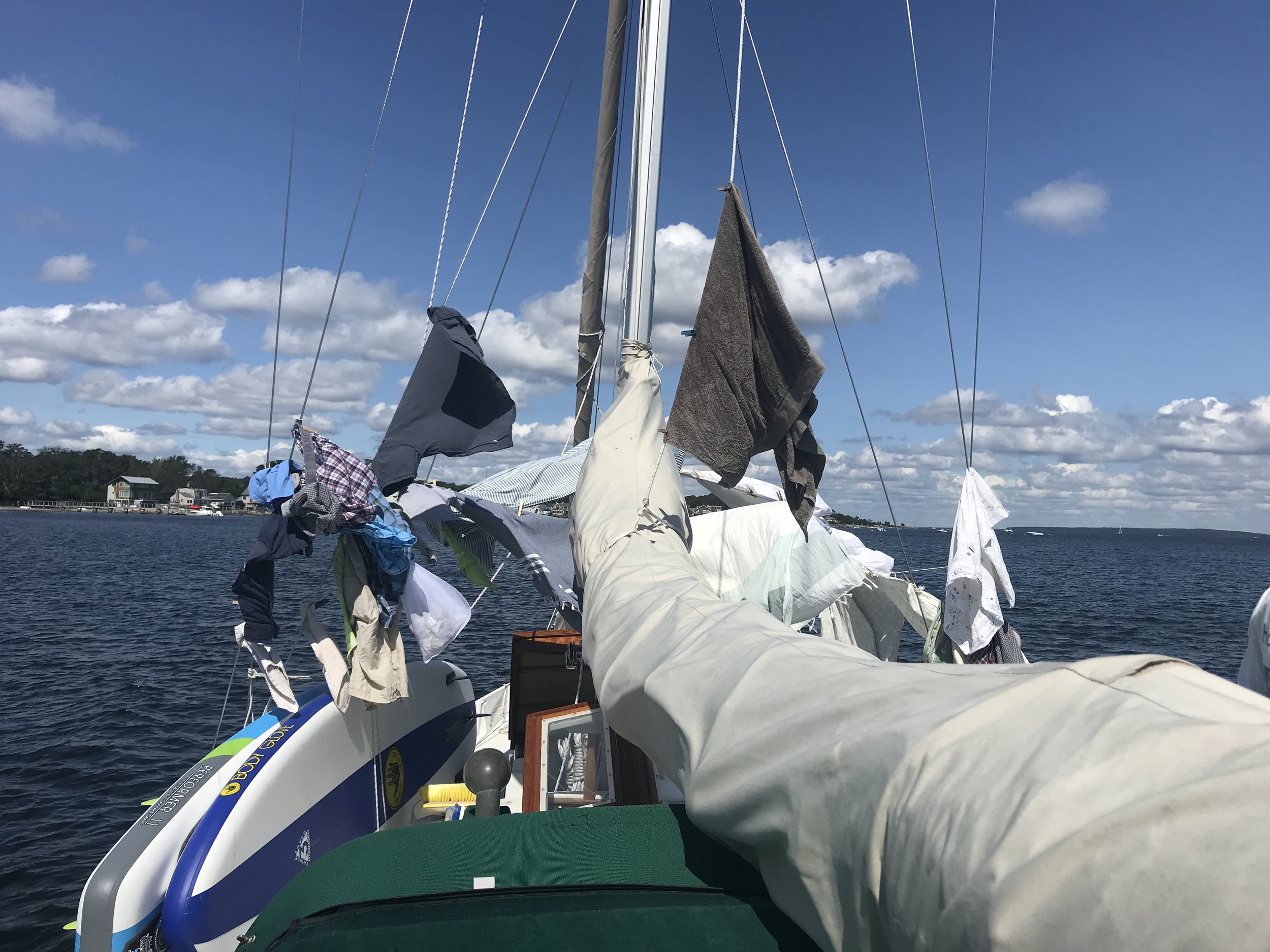Water Catching FTW
Look past Resiliance to the waterfall between her masts.
It rained so hard last night there’s a waterfall gushing down the mountainside near the trail that goes across the peak to the village on the other side. There was no waterfall yesterday. That’s a LOT of water. We put buckets and collapsible water jugs out this morning, and 20 minutes later had collected 20 gallons.
Hang on a second. Don’t you have a watermaker, Nica?
Yes. Yes we do. We have a watermaker, which is powered by our solar panels.
Random solar panel shot. With some gorgeous Marquesas landscape.
Additionally, here in the Marquesas, almost every inhabited place we’ve been has a tap ashore where you can get water (it might not be potable, but it’s good enough for showers or laundry).
If you think water is not a completely scarce resource around here, you’d be right.
It’s still worth putting in the effort to catch water when we can.
Sure, we can make water. Our little machine chugs out a little over 3 gallons an hour, costing us 10 amps of electricity. That’s bread machine time (saving propane), or internet time, or charging our computers. A little effort today netted us a savings of about 7 HOURS of run time. And while we’re not going to drink that water, we are doing laundry (other than sheets) by hand; being able to be lavish with the water use means our clothes are that much cleaner.
Free water from the sky
We could, of course, fill from shore. That means putting the jugs in the dinghy, going ashore, finding the tap, schlepping the empty jugs to the tap and then the full ones back to the dinghy. Then it’s a matter of lifting the full jugs on deck. A 5 gallon jug of water weighs 40 pounds.
When we fill from the sky, those jugs get to stay right on deck. No lifting required.
How do we catch water?
When we first cruised on Calypso, we had no water maker, and we built the awning knowing we’d be catching every drop of water possible. That awning had designed low points, where Jeremy sewed in quick-connect fittings. When it started to rain, we let the first few minutes clean the awning, and then attached a hose which we could direct directly into our water tanks. We had many nights filled with intense scrambling to set everything up when the rain started; many nights when we toasted to our wealth of water once the tanks were filled to the brim.
Now, our catchment methods are less fancy. Still awning-based, though we’ve also caught quite a bit of water just with the bimini. Create a low point and a way to capture the runoff . . . now we tie the awning down using a bucket as the tie down point. Rain cascades off the canvas and into the bucket. Not precise, but it works. And then we use a siphon to transfer the water from the bucket into jerry jugs (the smaller diameter mouth on the jerry jug makes it harder to catch water as efficiently), then fill the buckets up again.
Awning tied down so water goes into the bucket. Note collapsible jug next to the bucket.
You could catch water just into buckets from the sky, definitely a feasible option if you’re in a place with regular deluges. And the dinghy is an incredibly efficient catcher of water, though it’s a little harder to ensure cleanliness and a bit more work to transfer that water into jugs or buckets, especially if the dinghy is in the water.
Probably 30 gallons or more just in the dinghy. Shoes are floating!
Even if you have a water maker. Even if you’re coastal cruising and have access to decent water at any fuel dock. Even if you dismiss it out of hand.
Catching water is worth it.
Laundry with free water? yes please!
